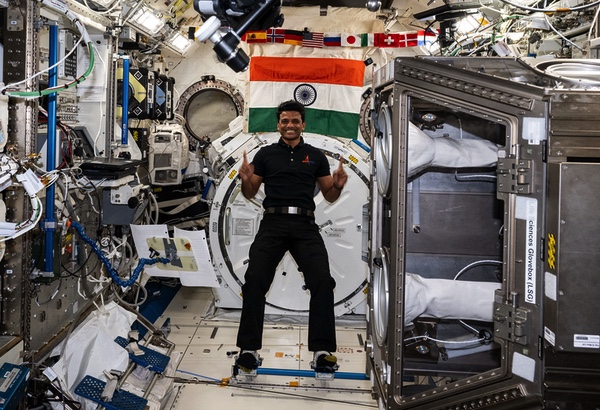Mission Gaganyaan: optimism and criticismby Martand Jha
|
| There are always going to be critics who would try to steer the discourse entirely towards the pressing needs of the day, even at the cost of overlooking the emerging technologies whose benefits in future might outweigh the pressing needs of today. |
The answer to these critics is very plain and simple. On the first point regarding the superpowers having achieved this feat half a century back, the counter question is that if some other nation has achieved something five decades back, should India not accomplish the same feat at all? This would mean not having a human spaceflight program and future missions at all because, as per the critics argument, the developed nations have already done it. Yes, they have done it for their own self interests as much as any other nation, including India, will do it for its own national interests. Yes, outer space is considered to be a global commons but that doesn’t mean that the success of one or few nations in outer space can be claimed by every other nation on the planet. Metaphorically yes, one can claim, it but that doesn’t change the world of realpolitik where every nation needs to stand up on its own and work on its own.
To the second argument put by the critics regarding the costs of a human spaceflight mission burdening the public exchequer. It’s true that this will have a huge cost since outer space is an expensive business, but one has to look at this scenario rationally and weigh in whether the gains of the human spaceflight mission would outweigh the costs. To anyone who agrees with the first counter-argument, they would also then agree with this argument too: if one agrees with the premise of India having an indigenous human spaceflight program, they would also agree that it would require a certain cost.
To the third argument, where the critics argued for investing in development sectors like sanitation, healthcare, and education, the counterargument is that this same line of argument was there in the late 1950s and early 1960s as well, when India as a newly independent young nation was trying to sow the seeds of an indigenous space program. That time, too, India was suffering from poverty, hunger, undernutrition, illiteracy, and more. Also, natural disasters like floods and drought used to continually plague the country. At that time, policymakers and shapers like Dr. Vikram Sarabhai, who is considered to be the father of the Indian space program, didn’t bow down to the pressures of those critics. If he had, India would probably not be even having a space program to begin with.
This shows that there are always going to be critics who would try to steer the discourse entirely towards the pressing needs of the day, even at the cost of overlooking the emerging technologies whose benefits in future might outweigh the pressing needs of today. India has always walked on the philosophy of the taking the middle path, the “Madhyam Marg.” Mission Gaganyaan is also a step in the same direction: reaching for the skies, without overlooking the ground realities.
Note: we are now moderating comments. There will be a delay in posting comments and no guarantee that all submitted comments will be posted.
